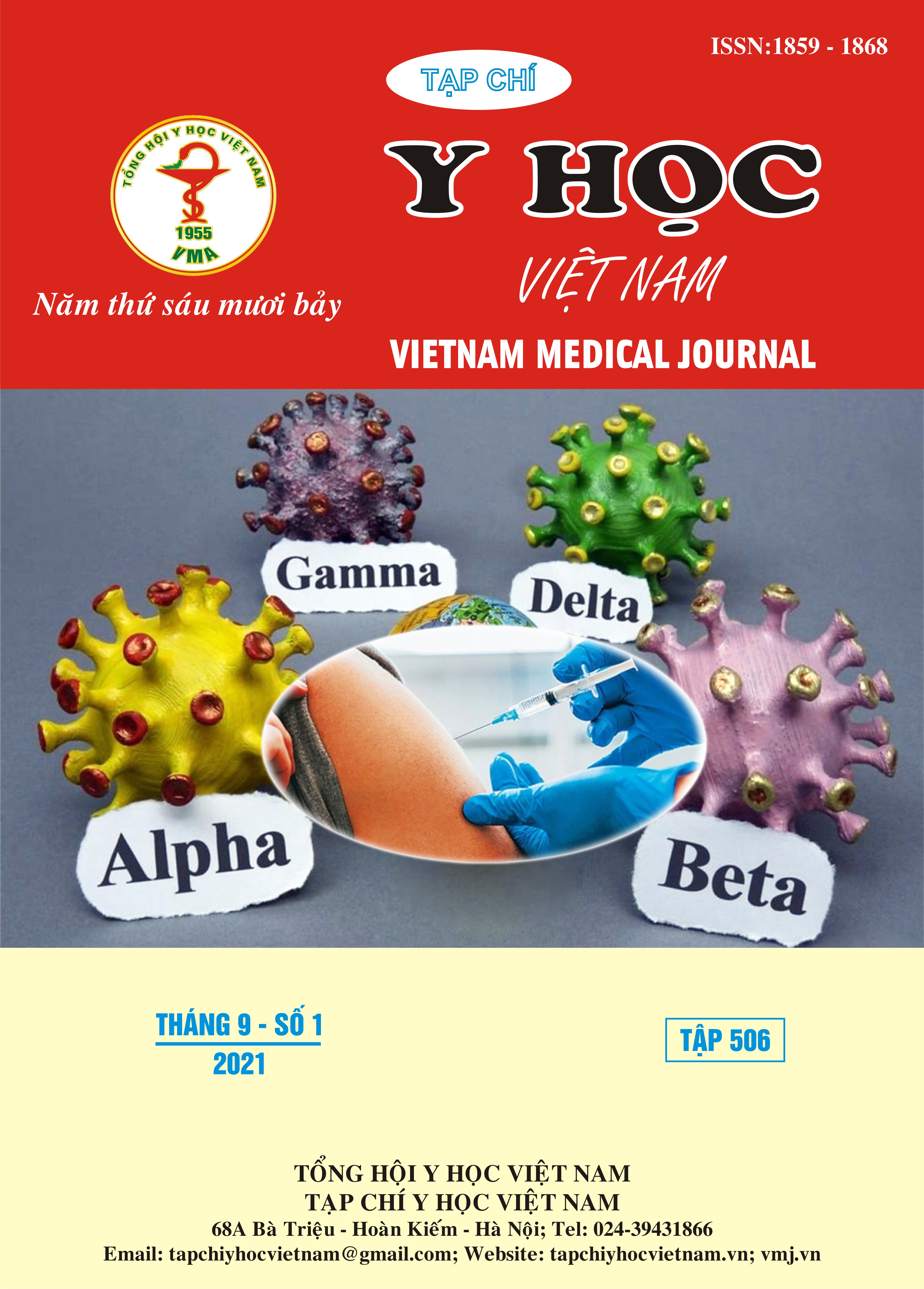CLINICAL AND PARACLINICAL FEATURES IN CHILDREN WITH ANTI-N-METHYL-D-ASPARTATE RECEPTOR ENCEPHALITIS
Main Article Content
Abstract
Objective: To report the clinical and paraclinical features of 61 pediatric patients with anti N-Methyl -D-Aspartate receptor encephalitis. Study design: cross sectional study, review of clinical data all patients with anti NMDA receptor encephalitis who did not have past medical history of viral encephalitis from January 2019 to August 2021 in National Children hospital. Results: The median age of patient was 7 ±3,7 years, 25 males and 36 females; 50,8% patients had prodromal symptoms at 1-2 weeks before onset disease. The most common initial symptom was neurologic, usually seizures. On admission, 93,4% patients presented with behavioral change, frequent agitation, screaming, 68,9% with mood disorders, 75,4% with sleep disorders; 52,5 % with movement disorders; In 61 patients, 77% patients decreased level of consciousness, only 17% mental status changed in first 3 day onset of the disease ; 2 females had ovarian teratoma; 93,5% patients had abnormal background activity on EEG such as focal slowing or generalized slowing, 23,9% patients had epileptic discharges; 24,6% patients had abnormal brain MRI, 70% patients increased protein level or pleocytosis in cerebral spinal fluid. Conclusion: Anti-NMDA receptor encephalitis in children has diverse clinical symptoms, seizues are common initial symptoms, prominently behavioral-mood disorders, sleep disturbances, speech disorders, mental status impairment and movement disorders. The most common paraclinical changes are EEG with slowing activities, abnormal cerebral spinal fluid and ¼ of cases with abnormal brain MRI
Article Details
Keywords
anti NMDA receptor encephalitis, autoimmune encephalitis
References
2. Graus F, Titulaer M.J, Balu R. A clinical approach to diagnosis of autoimmune encephalitis. Lancet Neurol. 2016, 15(4), 391–404.
3. Armangue T, Leypoldt F, Malaga. Herpes simplex virus encephalitis is a trigger of brain autoimmunity. Ann Neurol. 2014, 75(2), 317-323.
4. Rani A. Sarkis, M. Justin Coffey, Joseph J. Cooper, Anti-N-Methyl-D-Aspartate Receptor Encephalitis: A Review of Psychiatric Phenotypes and Management Considerations: A Report of the American Neuropsychiatric Association Committee on Research. JNCN. 2019, 31(2):137-142.
5. Nicole R. Florance, Rebecca L. Davis, BA Christopher Lam. Anti–N-Methyl-D-Aspartate Receptor (NMDAR) Encephalitis in Children and Adolescents. Ann Neurol. 2009, July ; 66(1): 11–18.
6. Titulaer M.J, McCracken L, Gabilondo I. Treatment and prognostic factors for long-term outcome in patients with anti-NMDA receptor encephalitis: an observational cohort study. Lancet Neurol. 2013, 12(2), 157–165
7. Thais Armangue, Marten J. Titulaer, Ignacio Malaga. Pediatric Anti-N-methyl-D-Aspartate Receptor Encephalitis—Clinical Analysis and Novel Findings in a Series of 20 Patients, J Pediatric. 2013 ;162:850-6
8. Xiaolu Xu, MD, Qiang Lu, MD, Yan Huang. Anti-NMDAR encephalitis A single-center, longitudinal study in China, Neurol Neuroimmunol Neuroinflamm. 2020 ; 7:e633


